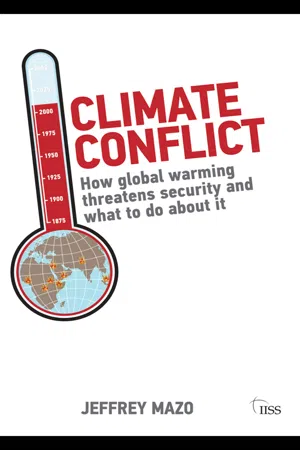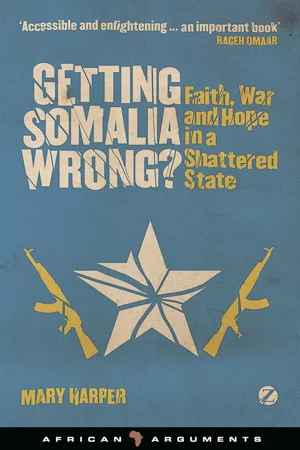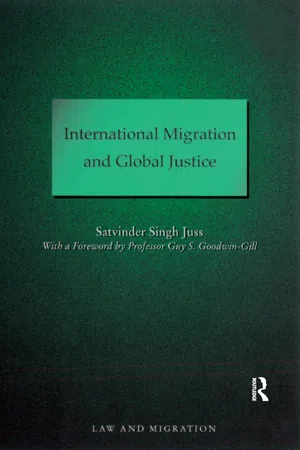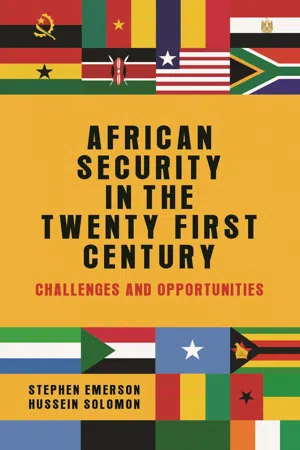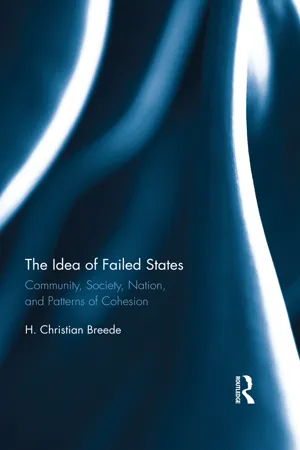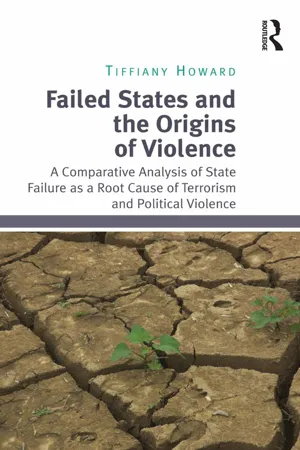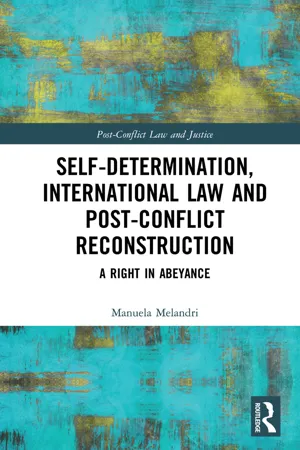Geography
Failed States
Failed states are countries that are unable to provide basic services and security for their citizens, often due to weak governance, corruption, and internal conflict. These states may experience economic collapse, social unrest, and humanitarian crises. The concept is important in geography as it helps to understand the challenges and complexities of statehood and governance in different regions of the world.
Written by Perlego with AI-assistance
7 Key excerpts on "Failed States"
Learn about this page
Index pages curate the most relevant extracts from our library of academic textbooks. They’ve been created using an in-house natural language model (NLM), each adding context and meaning to key research topics.
- eBook - ePub
Climate Conflict
How Global Warming Threatens Security and What to Do about It
- Jeffrey Mazo(Author)
- 2010(Publication Date)
- Routledge(Publisher)
The failure of governance in Sudan long preceded the current Darfur conflict. It was one reason why the fighting broke out and was able to spread and continue for so long. Yet the violence in Darfur began just as the long civil war in the south came to a negotiated end, raising hopes for renewed nation-building and development. This raises the question: how representative is the Darfur conflict of how changing climate might interact with other factors affecting state stability over the next few decades?Why states fail
With the proliferation of new states – the ‘Group of 77’ developing states now has 130 members – and an increasingly interconnected world, state failure has risen as an international concern. The world has more stable states than ever before, but also more weak or fragile states. Many of the new states created in the wave of decolonisation after the Second World War and after the end of the Cold War lack historical traditions, established institutions, developed economies and adequate resource bases. Failure threatens global stability because it can lead to increasing violence, both criminal and political; loss of control over borders and parts of national territory; increased ethnic hostility; and migration to neighbouring countries with their own stability issues or to developed countries.As in the historical cases of social and cultural collapse discussed earlier, the causes of state failure can be geographical, physical, historical or political, and contingent and idiosyncratic human decisions can be as important as structural or institutional weaknesses. Signs of impending failure can include rapidly deteriorating living standards, shortages of foreign exchange, corruption, subversion of democratic norms, breakdown of civil-society and most state institutions and expansion of security institutions, and ethnic tensions. In a vicious cycle, the state begins to provide fewer and fewer services to its citizens until, ultimately, state legitimacy crumbles. The outcome is variously civil war, break-up, or total collapse, as in the case of Lebanon in the 1980s, Sierra Leone in the 1990s or Somalia in the last decade.2A weak state is not necessarily a failing one; a failing state will not inevitably fail; and a failed state will not inevitably collapse. In 2002 political scientist Robert Rotberg identified one collapsed state (Somalia) and seven (Afghanistan, Angola, Burundi, the Democratic Republic of the Congo (DRC), Liberia, Sierra Leone and Sudan) as states that could be characterised as failed for at least the preceding decade. Other Failed States, such as Lebanon, Bosnia, Tajikistan and Nigeria, had recovered from failure. He argued that there were perhaps two dozen failing states, including Colombia, Sri Lanka, Indonesia and Zimbabwe, while many more could be considered weak.3 A variety of measures have been developed to identify, characterise and categorise weak, fragile or Failed States, including the Fund for Peace/Foreign Policy Failed States Index (FSI); the Brookings Institution’s Index of State Weakness in the Developing World (ISW); and the Country Indicators for Foreign Policy project at Carleton University (CIFP). These indices use different indicators (from 12 to 83, each in turn based on many more underlying variables) and different algorithms for weighting and grouping. The different methodologies produce strikingly divergent results (see Table 1 ). Although there is some degree of overlap, only ten states appear among the top 20 in all three lists.4 The profound disagreement between these models for assessing state fragility, not to mention those that purport to predict conflict, violence or state failure,5 - eBook - ePub
Getting Somalia Wrong?
Faith, War and Hope in a Shattered State
- Mary Harper(Author)
- 2012(Publication Date)
- Zed Books(Publisher)
Media reports and some lengthier, more thorough studies by human rights groups, think tanks, academics and others frequently refer to Somalia as a ‘failed state’, leading to the impression that nothing works in the country, that it is a bloodbath, awash with disorder. Such an image is misleading, and has in all likelihood contributed to misguided attitudes and policies, not just on the part of foreign governments, but also aid organizations, pressure groups, potential investors and others.Dealing with perceived ‘Failed States’ has become a key part of US foreign policy. The 2002 US National Security Strategy stated that ‘America is now threatened less by conquering states than we are by failing ones’. The 2008 US National Defense Strategy also regarded state ‘failure’ as a potentially serious security threat: ‘The inability of many states to police themselves effectively or to work with their neighbours to ensure regional security represents a challenge to the international system … If left unchecked, such instability can spread and threaten regions of interest to the United States, our allies, and friends.’The term ‘failed state’ is not a neutral definition. Noam Chomsky has devoted a whole book applying the term to the United States.2 Some descriptions of what constitutes a ‘failed state’ are useful when discussing Somalia, but they should not be applied as blanket terms; they should only be used to describe certain parts of the country at certain periods in its history. The Crisis States Research Centre at the London School of Economics describes a ‘failed state’ as one ‘that can no longer perform its basic security and development functions and that has no effective control over its territory and borders’. This is of relevance to parts of Somalia, particularly the southern and central regions. Also helpful is the American academic Robert Rotberg’s definition of a ‘failed state’ as a territory that is ‘tense, deeply conflicted, dangerous and bitterly contested by warring factions’ and ‘hospitable to and harbouring non-state actors – warlords and terrorists’.3 - eBook - ePub
- Satvinder Juss(Author)
- 2016(Publication Date)
- Routledge(Publisher)
4 The Failed States PhenomenonINTRODUCTION
In a speech in London in early 2005, ‘Not Every Country in the World can be Democracy’, Professor John Gray of the London School of Economics, drew attention to the state of the world today, where there are an increasing number of broken, fragmented and corroded states.1 In much of Africa, Asia and the Balkans, he commented, there is nothing resembling a functioning modern state. Instead, there are failed or semi-Failed States. Yet, this is not a new phenomenon. It has been known to the international community for a good many years now. A failed or collapsed state is not simply a state that is institutionally destabilized. This destabilization need not be by civil strife or guerrilla warfare. It can arise in other ways also. The World Bank in 19972 highlighted three distinguishing features of a collapsed state. These are: (1) ‘states that have lost (or failed to establish) legitimacy in the eyes of most of the population ... and are therefore unable to exercise authority’; (2) ‘states that have been run into the ground by leaders and officials who are corrupt, negligent, incompetent, or all three’; (3) ‘states that have fragmented into Civil War, and in which no party is capable of re-establishing central authority’.3 State collapse, however, is a process. When does one determine that a state is in full collapse?It seems to me that one can have a country with internal dissension, such as in Kosovo, where the state has ‘fragmented into civil war’ but where one party still has central authority, and yet be said to be in a state of collapse. One can even have a state without civil war, such as in Afghanistan or Pakistan, where the central authority does not have sovereign control over outlying areas which are a law unto themselves. In both of these situations one can realistically talk of a failed state phenomenon where the violation of human rights may be at the behest of either state elements or non-state elements. The World Bank definition is unduly limiting in this respect. It is more accurate to say that a failed state is one that has experienced a ‘fundamental loss of institutional capability’.4 It is a de facto and not a de jure - eBook - ePub
African security in the twenty-first century
Challenges and opportunities
- Stephen Emerson(Author)
- 2018(Publication Date)
- Manchester University Press(Publisher)
1 Thus, this approach tends to cloud, and even misleads clear analysis, due to the fact that the concept contains culturally specific assumptions about what a successful state should look like. Therefore it groups together disparate sorts of states with diverse problems, which leads to narrow and univalent policy prescriptions. Thus, a more complex view of state failure is needed, one that addresses a range of empirical state capabilities, which are grounded in the concept of “positive sovereignty” or the state proactively providing for citizens’ needs.And while the concept of “state failure” or “failing states” is much debated among academics (and will not be resolved here), the consequences of such failure are all too real, especially in Africa. Endemic violence, ethnic and religious tensions, rampant human rights abuses, rising terrorism and crime, along with a lack of legitimacy and political inclusion, as well as an inability to exercise effective control over territory are hallmarks of failing states. The Fund for Peace’s 2016 Fragile States Index, for example, ranks six African countries—Somalia, South Sudan, CAR, Sudan, Chad, and the DRC—as the most in danger of collapse, and African countries account for 14 of the top 20 overall.2 Tellingly, the DRC, Somalia, and Sudan, have ranked in the top ten every year since 2005. To compound matters still further, such regional powerhouses as Nigeria, Kenya, and Ethiopia also find themselves in the top 25 of the Index as their stability has declined.3 - eBook - ePub
The Idea of Failed States
Community, Society, Nation, and Patterns of Cohesion
- H. Breede(Author)
- 2017(Publication Date)
- Routledge(Publisher)
38Olivier Nay expands on this need for stability and structure, arguing that a lack of critical, academic engagement and debate about the merits of the terms ‘Failed States’ and ‘fragile states’ led to the securitization of the concept during the Cold War, compounding in severity over the decades. So, by the mid-2000s – seemingly confirmed by the events of September 11, 2001 – state failure was no longer simply a domestic issue and had instead become a problem of international security.39 Interestingly, once the problem of failed and fragile states was securitized, “some scholars started to identify the analytical limitations of this rhetoric.”40 As with policy, when the issue was elevated on the proverbial agenda as a security issue, and hence carried with it great importance, academics began to take notice of this concept – and what they found was troubling.In recent years, scholars have suggested that the relative success of the state – even in the West – is a rather “surprising” development.41 The idea that people willingly hand over money (in the form of taxes), send their children to school, and serve in militaries is a testament to the appeal of the concept of statehood and the services it can provide. Taking a long view of history, this concept of statehood is not new. Indeed, state failure is the “default setting” of history, a resetting of failed state programs, varying in intensity, for new ones.42 Social organization prior to the state – although not the Hobbesian nightmare – was certainly more violent and less prosperous.43 The idea that the failure of the state is some new, acute security threat is an ahistorical view of world history, one that smacks of presentism.44 State failure as a concept assumes that the Western way of the state is the only appropriate one, disregarding other state conceptions as lesser in their validity.45 For these reasons, the concept of state failure is a troubled scholarly one which has focused upon the symptoms of the failure rather than the causes or conditions.46 - eBook - ePub
Failed States and the Origins of Violence
A Comparative Analysis of State Failure as a Root Cause of Terrorism and Political Violence
- Tiffiany Howard(Author)
- 2016(Publication Date)
- Routledge(Publisher)
Chapter 4 (South East and South Asia), I discuss the potential for these regions to give rise to significant transnational threats given the current socio-political climate and economic conditions of those regions. At the same time; however, I acknowledge at no point do I empirically test the impact of state failure on support for political violence directed toward a state beyond that of the survey respondent’s.Nevertheless, as I look to continue this vein of research, future work will focus on broadening the argument made here to that of evaluating whether failing and Failed States function as breeding grounds for all levels of political violence—domestic and transnational. The implication of such an empirical finding would further advance our understanding of the role failing and Failed States play in fostering radical extremist thought and behavior. Given the foundation established by the research conducted in Failed States and the Origins of Violence , in the following section I discuss the context of such implications according to each region.Latin America
Of all the regions where state weakness and political violence are a concern, this one is the least critical. Despite the prevalence of violence by the drug cartels and paramilitary groups, these organizations are focused solely on obtaining power within the state and financial control over the drug trade. Thus, there is no ideological or religious goal that drives groups such as the ELN and FARC in Colombia or the Sinaloa and Zetas in Mexico. Further, the existence of the West does not threaten them or their operations. Quite the opposite. The West has repeatedly sold arms and supported these cartels, rebel groups and paramilitaries, as evidenced by the Iran-Contra Affair, and the recently exposed Fast and Furious program. Many would even argue that because they lack a political motivator, these groups should not even be considered terrorist organizations. - eBook - ePub
Self-Determination, International Law and Post-Conflict Reconstruction
A Right in Abeyance
- Manuela Melandri(Author)
- 2018(Publication Date)
- Routledge(Publisher)
The terms belong to the language of international relations but have no value in the lexicon of international law. The question of whether they should, or whether international law should pay special attention to states without an effective government is one open to debate. Several reasons have been adduced to why international law should have specific provisions for so-called Failed States. For instance, in the 2005 report of the High Level Panel on Threats, Challenges and Change, A More Secure World: Our Shared Responsibility, the UN recognised that the existence of weak states poses risks to collective security. 34 In addition, it is generally acknowledged that weak/Failed States with ineffective governments are likely to have internal consequences as they may not be able to protect and promote human rights or provide for the basic needs of its population on its territory. 35 Some have noted that state failure also has a negative impact on representation in bilateral and intra-state fora, because the absence of an effective government affects consular relations between states as well as states’ representation in the UN General Assembly and other specialised UN agencies. 36 Brooks further notes that there are certain specifically legal challenges posed by ineffective states: ‘they [Failed States] cannot enter into or abide by treaties, they cannot participate in the increasingly dense network of international trade, environmental or human rights agreements or institutions’. 37 Essentially, a situation whereby a failed state is incapable of acting as a subject of international law leads to the exclusion of the people of the failed state from international interaction. 38 In this respect, Giorgetti adds that Failed States are problematic for international legal order not only because they unable to fully perform their obligations towards their citizens, but also because they are unable to live up to their obligations towards the international community as a whole
